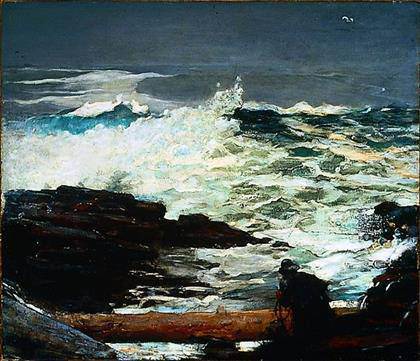
Zeng Fanzhi
Mask Series No.6, 1996
200 x 360 cm (in two parts)
Private collection
© Zeng Fanzhi studio

Zeng Fanzhi
Portrait, 2004
200 x 150 cm
Collection of the artist
© Zeng Fanzhi studio
Zeng Fanzhi retrospective – Musée d’Art Moderne, Paris The Musée d’Art Moderne de la Ville de Paris presents the first French retrospective of Chinese painter Zeng Fanzhi from 18 October 2013 to 16 February 2014.]]>
Source: Musée d’Art Moderne de la Ville de Paris
Highly respected by private collectors and museums, Zeng Fanzhi has been deploying since the 1990s a distinctive language marked by his kinship with both Asian art and the many Western influences he has been subjected to. Confronted with this all-embracing style, the viewer is reminded of Chinese landscape painting at the same time as he thinks of Warhol, Bacon, Balthus and Pollock.
Nonetheless, Zeng Fanzhi’s oeuvre can hardly be reduced to an assimilation of traditional and modernist paragons. In his use of many different styles and themes, the artist combines a rigorous spirit of painterly and intellectual investigation with great technical control. Looking at these canvases, the spectator is left facing something infinite, as if pulled into the artist’s inner world.
Zeng Fanzhi’s work mingles the history of China with his own personal history. His memories of a youth spent living near the hospital in Wuhan have left their mark on the early series of pictures, with their depictions of surgical operations, waiting rooms, meat and unclothed bodies. Other works from the 2000s call up China’s past: in Tian’An Men (2004), for example, we recognise Mao. And while the pictures making up the various Mask Series still betray the influence of Pop Art, the recent portraits and landscapes tend towards a darker abstraction. Hatched with brambles and seething with animals and human bodies, his gigantic polyptychs show a restrained expressionism that references German painting, and that of Dürer in particular.
Zeng Fanzhi was born in 1964 in Wuhan, China. In the course of his training at the art school there he got to know both Chinese and Western contemporary art. Driven by these influences and keen to find a more stimulating context, in 1993 he left for Beijing, where he now lives and works.
Related content
Georges Braque retrospective at Grand Palais Paris (exhibition, 2013)
Follow us on:


